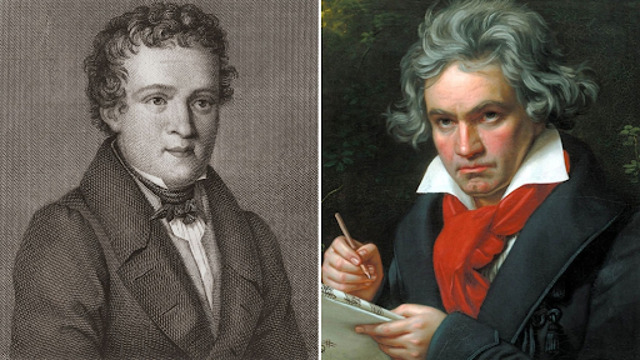
Scientists have uncovered new insights into two historical figures: Kaspar Hauser, once believed to be a lost prince in 19th century Germany, and composer Ludwig van Beethoven, whose health issues may have been linked to lead poisoning. These findings shed light on their mysterious lives and reveal unexpected connections to their histories. CNN
In 2024, scientists have made significant strides in uncovering secrets about some of history's most enigmatic figures and events. With the help of cutting-edge technology, ancient DNA analysis, and groundbreaking studies, the mysteries of the past are being slowly unveiled, providing fresh insights into the lives of historical figures and events that have puzzled us for centuries.
One of the most intriguing discoveries has come from Pompeii, where scientists have reexamined the tragic eruption of Mount Vesuvius in AD 79. Victims preserved in ash for thousands of years are being studied using ancient DNA, leading to new understandings of their lives. For example, a previously thought mother and child, who were found locked in an embrace, were revealed to be an unrelated adult male comforting a child in their final moments. This discovery not only changes the understanding of the relationship between the two figures but challenges other long-standing assumptions about the Pompeii tragedy.
The broken skull of "Vittrup Man" is now showcased at the Vendsyssel Historical Museum in Denmark. CNN
A different mystery emerged from the bones of "Vittrup Man," a Stone Age migrant discovered in a peat bog in Denmark. He had been beaten to death with a wooden club over 5,000 years ago. Analysis of his teeth, bones, and DNA revealed that he had traveled from the coast of Scandinavia to Denmark, where he adopted a completely new lifestyle. His diet shifted from fish and seals to farming sheep and goats, a testament to the dramatic changes of his journey. While the exact reason for his violent death remains uncertain, it highlights his unique story as the oldest known immigrant in Denmark.
In 1938, researchers discovered the skeletal remains of a torso, referred to as "Well-man," in a well at a Norwegian castle. CNN
Another story that has captured attention is that of a man known as "Well-man," whose remains were discovered in a Norwegian castle well in 1938. Recent DNA analysis of his bones revealed startling details: he was not from the local population, as once assumed, but had ancestral ties to southern Norway. This revelation supports a story from an ancient Norse text about an invading army tossing a dead body into a well to contaminate the water supply during a siege in 1197.
Scientists studied strands of Beethoven's hair to learn more about his health. CNN
In 2024, the scientific community also solved a centuries-old mystery about Kaspar Hauser, a young man who appeared in Germany in the 1800s, claiming to be a prince. Speculation about his royal origins had persisted for over 200 years, but mitochondrial DNA analysis has now debunked the theory that he was from the royal Baden family. The true identity of Hauser remains a riddle, with many still wondering who he really was.
DNA tests on human remains discovered at a church site in Jamestown, Virginia, have revealed that the men may be relatives of Thomas West, the colony’s first governor. CNN
Meanwhile, another historical figure, the great composer Ludwig van Beethoven, continues to reveal new facets of his life. In 2024, scientists analyzed strands of Beethoven’s hair and discovered high levels of lead, arsenic, and mercury, offering new insights into the composer’s chronic health issues. It is believed that lead poisoning, likely from polluted water and food, contributed to Beethoven’s ailments and possibly influenced his music, connecting his suffering to the emotional depth of his compositions.
Astronomer Johannes Kepler created drawings of sunspots, which were later included in his 1609 book Phaenomenon Singulare Seu Mercurius In Sole. CNN
DNA analysis has also uncovered a hidden scandal within the family of Thomas West, the first governor of the Virginia colony. Researchers discovered that two men buried in unmarked graves in Jamestown were related to West through their maternal lineage. One of them, Capt. William West, was found to be an illegitimate son of West’s spinster aunt, a fact that was deliberately kept secret for generations.
Samuel Washington, George Washington's younger brother, was laid to rest in an unmarked grave at the cemetery on his Harewood estate near Charles Town, West Virginia. CNN
Additionally, scientists have looked back to the stars to solve puzzles left by astronomers like Tycho Brahe and Johannes Kepler. Recent studies of Brahe’s alchemical work have uncovered surprising elements, such as tungsten, that he may have discovered without knowing it. Kepler’s sketches of sunspots, made centuries ago, have also helped modern astronomers understand the history of solar activity, offering new insights into the sun's behavior during periods like the Maunder Minimum.
As science continues to evolve, the stories of these historical figures and events are being uncovered in ways never imagined before. The past is no longer a distant, mysterious realm; thanks to modern technology, it’s becoming clearer, piece by piece.















